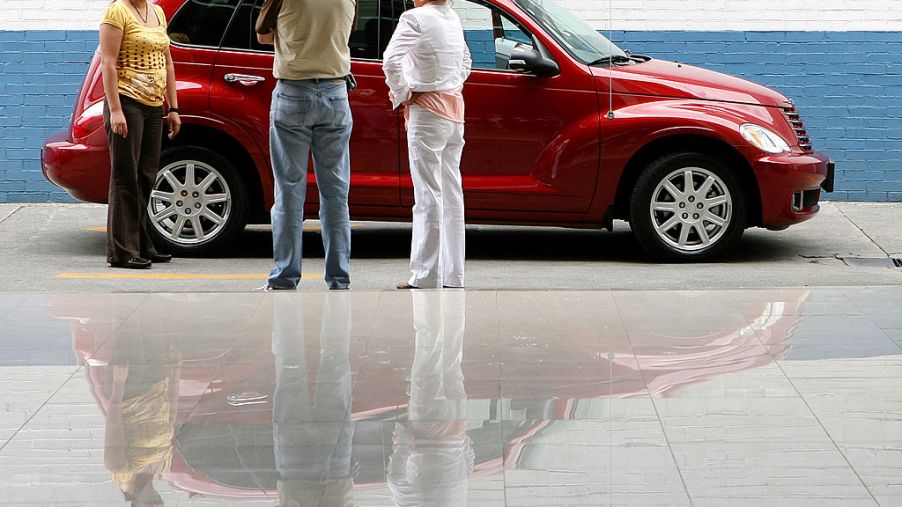
The Brief History of the PT Cruiser, Was It Really That Bad?
There is no science behind producing a fan-favorite vehicle. While every automaker hopes that their release sits well with consumers, this doesn’t always happen. Over the years, a few not-so-popular releases have hit the market. One model is the PT Cruiser. While some loved and still love the car, a lot of people were not sold on it, and it ended its run in 2009. But was the PT Cruiser really that bad?
The PT Cruiser’s 2001 introduction
With the Plymouth model set for discontinuation in 2001, the PT Cruiser was introduced to the market under the Chrysler nameplate. Designed by Bryan Nesbitt, the car was meant to evoke the appearance of a 1930s getaway car.
Launched in 2001, the PT Cruiser was initially introduced as a five-door, front-wheel-drive hatchback. However, a two-door convertible model with a sport bar and added protection was introduced in 2005. Unfortunately, 2008 was the last production year for the convertible model.
Due to the car’s mechanics and hatchback design, many classify it as a car even though, based on fuel economy calculations, the NHTSA classifies the PT Cruiser as a truck. When it was first released, the Cruiser was fitted with a four-cylinder 2.4-liter that produced 150 hp and 162 lb-ft of torque. The engine was coupled with a manual five-speed transmission and had an EPA rating of 18 MPG city and 24 MPG highway.
For European, Asian, and South African markets, there were optional four-cylinder 2.2-liter diesel and 2.0-liter D4RE engines available. Some of the first model’s features included steel wheels, power steering, and heated seats. While the car is somewhat polarizing, it won the North American Car of the Year when it was first released.
The PT Cruiser’s performance evolution
Over its nine-year run, the PT Cruiser went through revisions. But its exterior didn’t change much in order to avoid altering the car’s unique look. Most of the changes occurred under the hood. For instance, a high-output base engine with 230 hp was made available. The car’s technology features were also improved with satellite radio and cruise control.
The car came in several trim levels, like Limited, Touring, Touring Signature, Street Cruiser, and the GT. Other trims were offered periodically throughout the car’s run. There was a Limited Edition Platinum Series only available in 2004. Between 2002 and 2005 (and again in 2009) drivers could buy a Dream Cruiser Series.
The car also had several special editions. There was the 2003 GT Cruiser fitted with a turbocharged 2.4-liter inline-four engine that produced between 215 and 230 hp and 245 lb-ft of torque. Aside from its top speed of 125 miles per hour, you had the option of performance upgrades to make it more powerful.
Other special editions included the 2006 Street Cruiser Route 66 that came with sport suspension, speed control, and anti-lock brakes. PT Cruiser fans could also buy the Street Cruiser Pacific Coast Highway, Sunset Boulevard, 2009 Dream Cruiser Series 5, Couture Edition, and the PT Cruiser Sport which came with a 2.0-liter petrol engine.
Aside from special editions and trim models, Chrysler also marketed certain packages, like the Flame and Woodie packages that detailed the car with flame decals and side wood panels, respectively.
Production of the PT Cruiser stopped in 2009 with the last new model being sold in 2010. During its run, Chrysler sold 1.35 million units of the PT Cruiser. While the verdict of the car’s popularity is still out, it’s safe to say the PT Cruiser was a valuable vehicle for many consumers.


